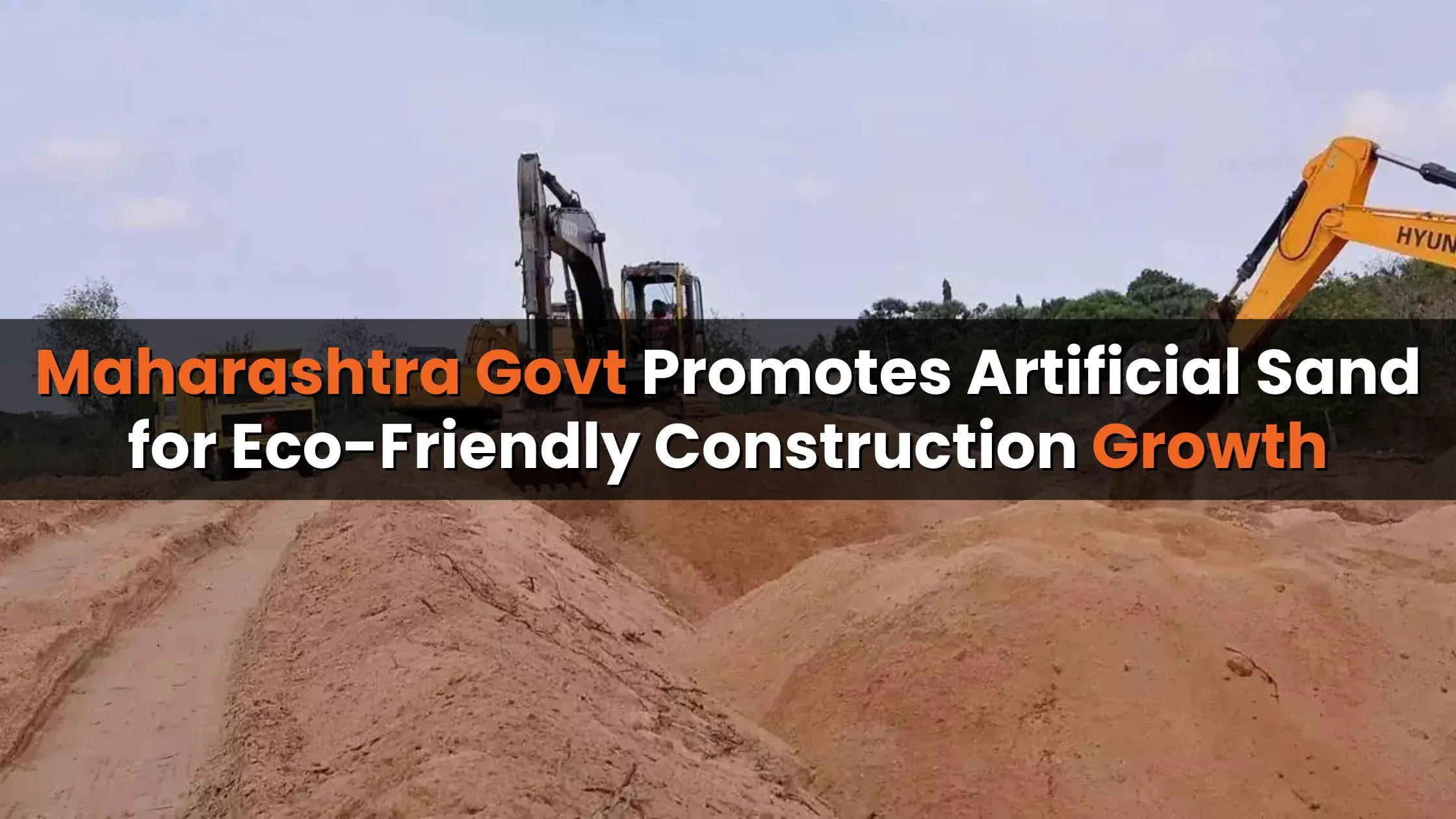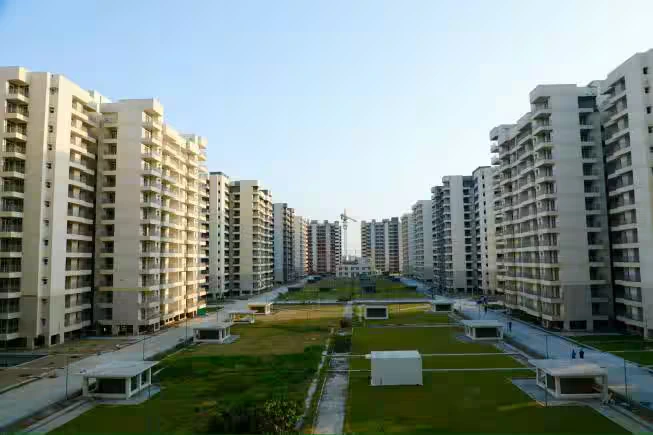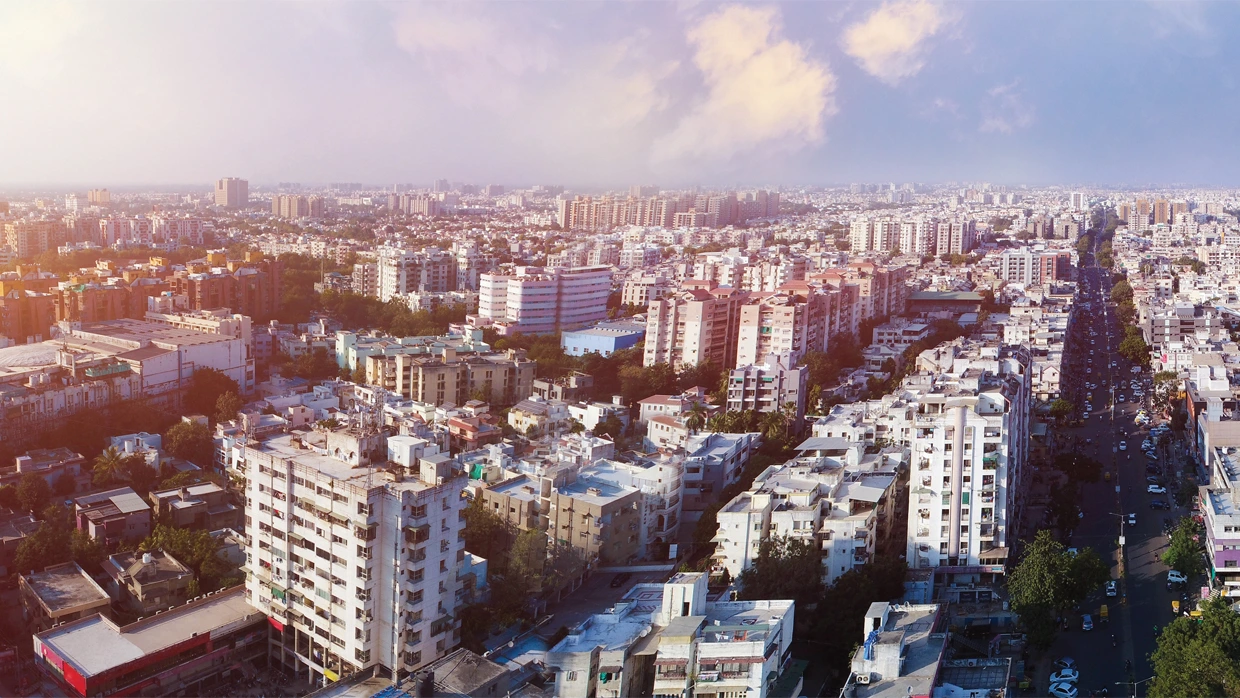Table of Content
The Maharashtra government is now moving towards sustainable development with the introduction of a policy to stimulate and support the use of artificial sand to be used in construction activities. The recently rolled out policy proposal and improvement recognizes that the sustainability (and therefore environmental protection) can be done through developing sustainability norms, while at the same time supporting the construction industry across Maharashtra, which is critical to the states gross development and economic growth.
Policy to promote the use of artificial sand is an important step in addressing the environmental impact of unregulated natural sand mining. We need to incentivize the reuse of natural sand, sand from stones, and stone waste rubble, giving thought to the finite and irreplaceable nature of natural sources of sand.
Why the Focus on Artificial Sand?
Construction has long relied on natural sand, harvested from riverbanks. But uncontrolled sand extraction has caused serious environmental harm, including:
- Ecosystem Destruction: Sand extraction interrupts river ecosystems and threatens aquatic life.
- Erosion and Flooding: Sand over-extraction erodes the riverbank, making it persistently vulnerable to flooding.
- Depletion of the Water Table: Over-extraction decreases groundwater levels, which are vital to agricultural and drinking water.
Artificial sand is a sustainable solution to this problem. Artificial sand is sustainable to the environment; it is plentiful; therefore, it is a responsible se, as the construction industry expands rapidly, along with the need for natural resources.
Also Read: 5 Key Facts About Aamir Khan’s Housing Society Redevelopment in Bandra
Key Policy Highlights
The Maharashtra government's policy overview has included several positive initiatives:
- Concessional Royalty Rates: Artificial sand has a royalty fee of only ₹200 per brass while natural sand has a fee of ₹600 per brass, making it more affordable for builders and contractors.
- Mandatory Usage for Government Projects: All government and semi-government construction projects will be required to adopt artificial sand.
- Establishment of Manufacturing Units at the District Level: The government hopes to establish 50 artificial sand units in every district, subject to approvals from forest, and environmental authorities, as well as district authorities.
These initiatives not only ensure that artificial sand is financially attractive but also pave the way for large-scale uptake.
Benefits of Artificial Sand
The shift toward artificial sand is a win-win for both the environment and the construction industry.
1. Environmental Conservation
By reducing reliance on natural sand, the policy helps:
- Minimize riverbank erosion.
- Protect aquatic habitats.
- Preserve groundwater levels.
2. Economic Advantages
Lower royalty rates make artificial sand a cost-efficient alternative for construction, reducing overall project costs without compromising quality.
3. Employment Generation
The establishment of artificial sand units will create numerous jobs at the local level, boosting rural and semi-urban economies.
Impacts on the Construction Sector
The construction industry can take a lot from the advancement of artificial sand:
- Reliable Supply: Artificial sand provides a continuous and plentiful supply without the downside of running out of natural sand, meaning delays in construction.
- Cost Savings: Builders can save on materials as they can take advantage of a lower royalty rate.
- Sustainability: The use of artificial sand makes the industry more environmentally friendly and meets the growing demand for sustainable building solutions.
Challenges and Implementation
Despite its benefits, the policy’s success hinges on overcoming certain challenges:
- Regulatory Clearances: Manufacturing units must obtain approvals from forest and environment departments, which could delay implementation.
- Initial Investment: Setting up artificial sand units requires significant capital, which could be a barrier for small-scale entrepreneurs.
To address these issues, the government can streamline approval processes, provide financial incentives, and offer training programs to entrepreneurs entering the artificial sand market.
Also Read: Builders in Noida Given 15 Days to Finalize Flat Registrations
A Sustainable Vision for Maharashtra
The Maharashtra government's support for artificial sand is a progressive baby step in achieving balance, paving the way for within and for other regions grappling with the same dilemma. With the construction industry increasingly reliant on artificial sand, this development is paving the way for a greener and stronger future for the Maharashtra construction sector.
By advocating for the increased use of artificial sand, Maharashtra is able to protect the aesthetic value of river habitats but also their continued ability of the construction sector to remain viable and competitive.
Once Maharashtra accepts its organic and sustainable adaptations for artificial sand, our society's construction habits will change, and sustainability will be sustainable.
Follow AquireAcers Whatsapp Channel to Stay Updated With The Latest Real Estate News







Ans 1. The policy aims to promote the use of artificial sand in construction to reduce environmental damage caused by natural sand mining and support sustainable development in the construction industry.
Ans 2. Uncontrolled extraction of natural sand harms ecosystems, causes riverbank erosion, depletes groundwater levels, and disrupts aquatic habitats. Artificial sand offers an environmentally sustainable alternative.
Ans 3. Cost Efficiency: Artificial sand has lower royalty rates, reducing project costs. Reliable Supply: It ensures a continuous and abundant supply. Sustainability: Promotes eco-friendly construction practices.
Ans 4. Reduced Royalty Fees: Artificial sand royalty is ₹200 per brass, compared to ₹600 for natural sand. Mandatory Use: Required for all government and semi-government projects. Manufacturing Support: Plans to establish 50 artificial sand units in every district.
Ans 5. Reduces riverbank erosion. Protects aquatic ecosystems. Preserves groundwater levels.
Ans 6. Regulatory Approvals: Units must obtain clearances from environmental and forest authorities. High Initial Costs: Setting up artificial sand units requires significant investment, which may deter small-scale entrepreneurs.
Ans 7. The government can streamline regulatory processes, offer financial incentives, and provide training programs to encourage small entrepreneurs to enter the artificial sand market.
Ans 8. Establishing artificial sand units will create numerous local jobs, particularly in rural and semi-urban areas.
Ans 9. By reducing dependence on natural sand, the policy encourages eco-friendly construction, preserves natural habitats, and supports long-term environmental conservation.
Ans 10. The initiative sets a precedent for other regions to adopt sustainable practices in construction, ensuring a greener future while maintaining industry growth and competitiveness.